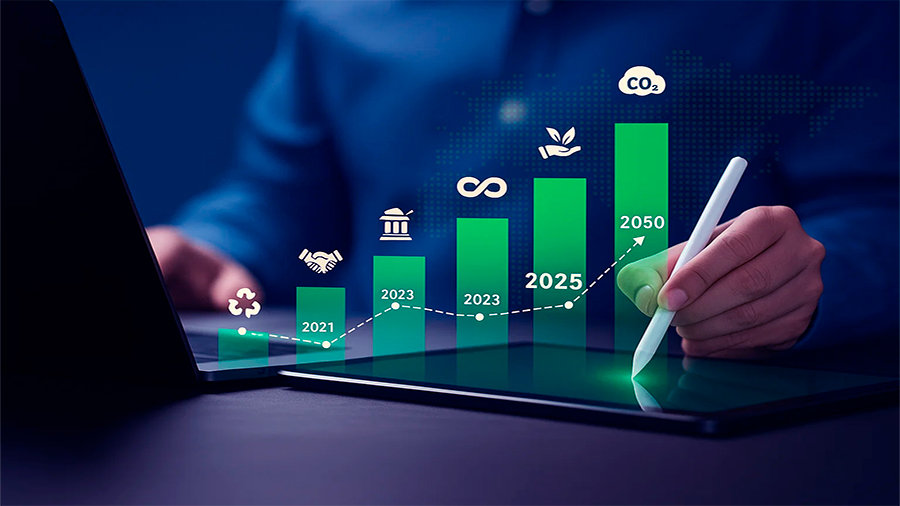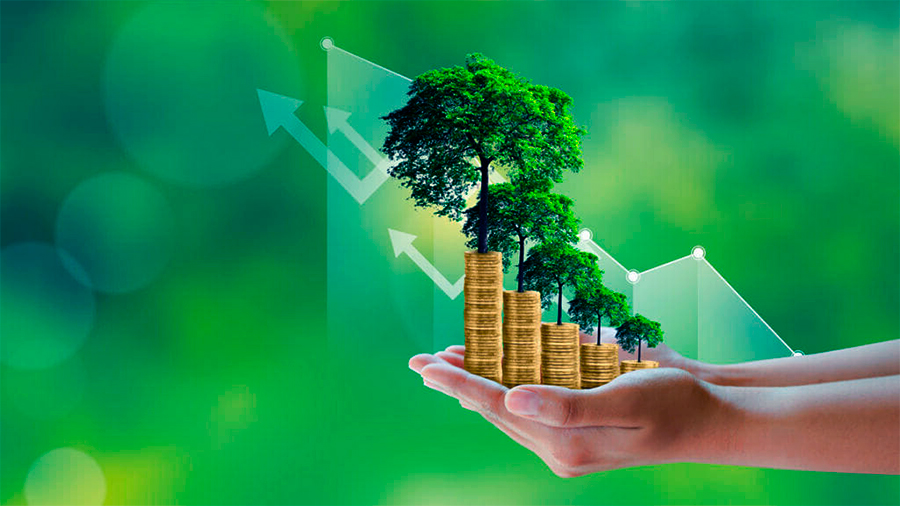How Eco-Loans Support Sustainable Farming And Reduce Risks
How Eco-Loans Support Sustainable Farming And Reduce Risks
Agriculture stands at a crossroads. On one side, rising input costs, unpredictable weather, and pressure to increase yields strain traditional methods. On the other, growing demand for sustainable products opens doors to new markets and higher prices. For many farmers, the missing link is capital. Shifting from conventional to eco-friendly practices requires upfront investment—whether it’s installing drip irrigation, building biogas plants, or adopting renewable energy. This is where eco-loans come into play. They provide financing tailored for sustainability, helping farmers lower risks, cut costs, and tap into growing consumer demand for green produce.
Why Farmers Turn To Eco-Loans
Eco-loans exist because sustainable practices often demand expensive technology or infrastructure. A drip irrigation system saves water but costs more than flood irrigation. A biogas unit transforms waste into energy, but building one requires cash many farms don’t have. Traditional loans may ignore these benefits, focusing only on short-term financials. Eco-loans differ. They evaluate environmental improvements alongside economic returns. By giving credit for lower emissions, resource efficiency, and future market value, they make green investments possible. For farmers, this support bridges the gap between intention and action.
The Market Premium
Sustainable produce often sells at higher prices. Export markets, large retailers, and conscious consumers reward farmers who adopt eco-friendly methods. Eco-loans help farmers access this premium by funding certification, compliance upgrades, and technology adoption. What looks like a cost today becomes higher revenue tomorrow, offsetting debt and creating lasting advantages. This premium also shields farmers from commodity price volatility, giving them more stable income streams and reducing long-term risks. Over time, consistent access to premium markets improves financial resilience and strengthens competitiveness.

Practical Examples Of Green Financing
Eco-loans support a wide range of projects. Farmers use them to install solar panels for irrigation pumps, cutting energy bills and reducing reliance on volatile fuel markets. Others borrow to build rainwater harvesting systems, protecting crops against drought. In livestock farming, loans back the installation of biogas digesters, turning manure into clean energy while reducing methane emissions. These projects lower operating costs and shield farms from risks like energy shortages or water scarcity. Each investment strengthens resilience, making farms less vulnerable to shocks that cripple conventional systems.
Drip Irrigation
Water is one of farming’s scarcest resources. Drip systems deliver precise amounts directly to roots, reducing waste by up to 50 percent compared to traditional irrigation. Farmers borrowing for such systems not only save money on water but also stabilize yields in dry years. This stability matters as climate change makes rainfall less predictable, threatening traditional irrigation systems. By investing in drip irrigation through eco-loans, farmers gain control over water use and protect themselves against drought-related losses. The result is higher efficiency, stronger resilience, and better long-term profitability.
Biogas Systems
Manure and crop residues are often seen as waste, but with the right technology, they become energy. Biogas digesters funded by eco-loans provide clean fuel for heating or electricity, replacing costly external energy sources. Farmers cut bills and even generate surplus energy for local sale. Beyond cost savings, biogas reduces methane emissions, a powerful greenhouse gas that damages the climate. Farmers also gain organic fertilizer as a by-product, lowering the need for synthetic chemicals. With eco-loan backing, biogas projects transform waste problems into revenue-generating, sustainable solutions.
Reducing Financial And Environmental Risks
Traditional farming carries hidden risks—volatile fuel prices, droughts, or stricter regulations on emissions. Eco-loans address these vulnerabilities directly. By financing efficiency and sustainability, they help farmers manage long-term stability. Lower energy bills cushion against inflation. Efficient irrigation protects against climate extremes. Compliance with green standards prevents penalties. In short, eco-loans reduce exposure to both environmental and financial shocks, making farms more secure. This is crucial in a world where climate unpredictability is now the rule, not the exception.
Insurance And Credit Benefits
Banks and insurers increasingly favor sustainable farms. Those who borrow through eco-loans often gain better access to crop insurance or follow-up financing. Lower risk profiles translate into improved creditworthiness. This means farmers can negotiate better loan terms in the future, paying less for the same borrowing compared to conventional peers. It also signals to markets that these farms are forward-looking and stable, which attracts investment. Over time, eco-loan users build a reputation as low-risk borrowers, strengthening their position in the financial system.
Opening Doors To Premium Markets
Access to markets is as important as cutting costs. Many export buyers now demand sustainability certifications as a condition of trade. Eco-loans help farmers fund these certifications, from organic labels to carbon-neutral standards. With them, farmers reach buyers willing to pay more, securing contracts that would otherwise remain out of reach. Premium markets are not limited to exports—domestic consumers are also shifting toward green brands. Supermarkets advertise low-emission or water-smart products, and farmers with eco-loans can meet this demand directly.
The Branding Effect
Green investments backed by eco-loans are not just practical—they also strengthen brand image. A farmer who advertises solar-powered irrigation or low-emission production signals modernity and responsibility. This reputation builds trust, increasing sales in both wholesale and direct-to-consumer channels. It also creates stronger relationships with retailers, who want to associate their supply chains with sustainable production. Over time, this reputation evolves into a competitive advantage that is difficult for late adopters to replicate. Eco-loans, therefore, serve not just as financial support but as tools for long-term branding strategy.

The Human Side Of Eco-Loans
Beyond numbers, eco-loans affect communities. Renewable energy installations bring electricity to rural areas. Water-saving projects reduce pressure on local resources. Cleaner farming lowers health risks from pesticides or waste mismanagement. Eco-loans therefore support more than individual borrowers—they create positive externalities for entire regions. When one farm invests in sustainability, neighbors often follow, creating a ripple effect of green practices across villages and landscapes.
Generational Change
Younger farmers are often more eager to adopt eco-friendly methods but lack resources. Eco-loans provide them with the financial support to innovate. By enabling younger generations to bring fresh ideas into farming, eco-loans support not just sustainability but also generational renewal in rural economies. Young farmers who access this financing often become leaders in introducing technology and new practices. Their willingness to experiment accelerates the adoption of green farming. In turn, this keeps rural communities vibrant and reduces the risk of depopulation in agricultural regions.
Challenges And Considerations
Eco-loans are not without challenges. High upfront costs mean debt must be managed carefully. Farmers need to ensure that revenue from efficiency gains or premium sales covers repayments. Access is another issue—many smallholders lack collateral or awareness of these loans. Governments, banks, and NGOs are working to expand eco-loan availability, but coverage is uneven. Finally, measuring the environmental impact requires robust systems to ensure money supports genuine sustainability rather than greenwashing. Transparency and accountability are as important as financial access.
The Risk Of Over-Borrowing
Even with eco-loans, borrowing must align with realistic income expectations. Farmers who overestimate yields or market premiums may struggle with repayment. Eco-loans reduce risks but do not eliminate them. That is why most programs encourage technical support alongside financing, helping farmers plan responsibly. Over-borrowing not only jeopardizes repayment but also weakens confidence in green lending as a whole. For sustainable finance to remain credible, both lenders and farmers must exercise caution and discipline.
The Conclusion
Eco-loans bridge the gap between the vision of sustainable farming and the financial realities of achieving it. By funding technology like drip irrigation, biogas systems, and renewable energy, they help farmers save money, manage risks, and unlock access to premium markets. Beyond financial returns, they reduce environmental footprints and build resilience against climate volatility. For farmers, eco-loans are not just about borrowing—they are about investing in a future where profitability and sustainability align. For communities and economies, they represent a path toward greener growth driven by the very people who feed the world.


